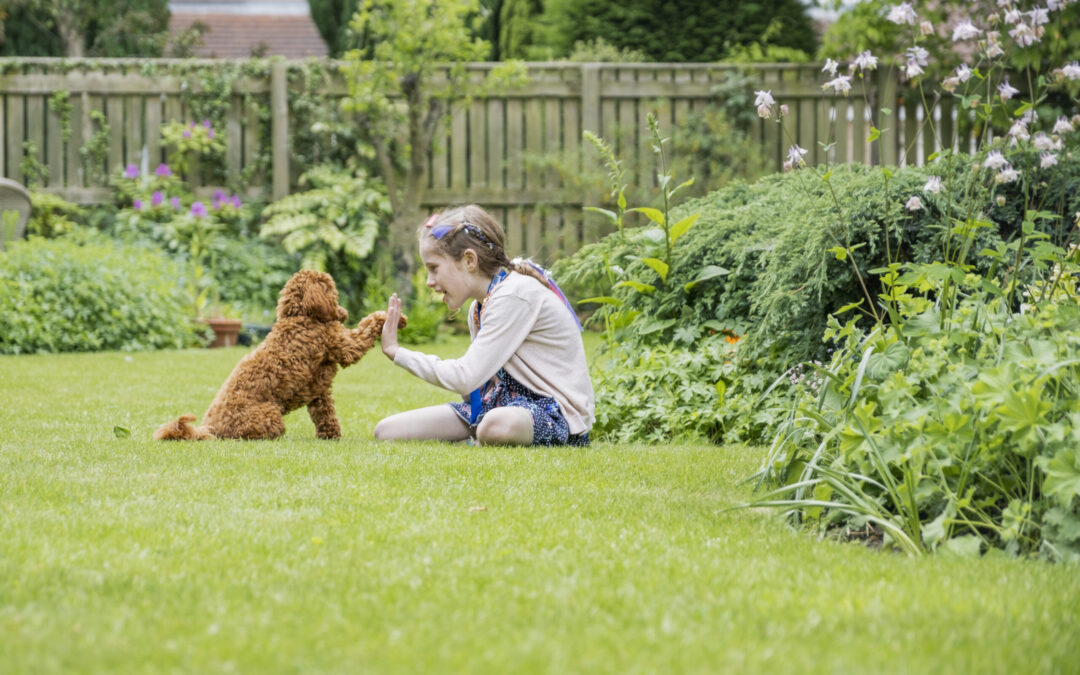A survey of 2,000 parents with school-aged children found that 74 percent of kids have expressed interest in having a pet. On average, these children ask for a pet 11 times per month starting at age six, which adds up to a total of 1,584 requests before they turn 18.
If you have a child in their early childhood years, chances are they have approached you with a similar request, and you may be wondering how adding a pet to your family could impact your child’s development. Here are six ways pets can contribute to your child’s holistic growth and well-being.
Encouraging physical activity
As childhood obesity continues to be a major health concern, pets can play a crucial role in keeping children active and healthy. Children with pets are more likely to engage in physical activity, such as playing outside, going for walks, or simply chasing pets around the house. Regular physical activity improves cardiovascular health, builds strong bones and muscles, maintains weight, and reduces the risk of chronic diseases later in life. The Centers for Disease Control and Prevention recommend that children get at least 60 minutes of physical activity daily, and owning a pet can be a fun and effective way to achieve this goal.
Offering comfort
Pets have the ability to comfort children and regulate their emotional responses, offering a calming presence, especially in times of stress or anxiety. Research has shown that simply stroking a dog can lower the stress hormone cortisol and effectively reduce blood pressure and heart rate. Additionally, human-animal interactions increase the feel-good hormones endorphin, dopamine, and oxytocin, which promote happiness, pleasure, and satisfaction while reducing stress, anxiety, and pain. Consequently, pet ownership has been linked to improved mental health by easing loneliness and depression and boosting self-esteem.
Developing empathy for others
Children who have a strong bond with their pets often have higher empathy scores. Caring for a pet requires a child to understand the needs and feelings of their companion, which can help them become considerate and compassionate individuals. This empathy can extend to people, including family, friends, and even strangers.
Inspiring a connection with nature
Pets can help children develop a deeper connection with nature. Through the care they provide, children learn to appreciate other animals and the world around them. Pets serve as a constant reminder to show respect for all living things, fostering a lifelong appreciation for the environment and a desire to protect it.
Improving communication skills
Interacting with pets can enhance your child’s communication skills, especially during their early childhood years. Studies have found that owning a pet can aid in language development. Pets provide a patient and engaging audience for a child’s babbling, fostering their early language skills. As children grow older, they tend to engage in frequent conversations with their pets, sharing their thoughts and feelings and even giving praise, orders, encouragement, and discipline. Furthermore, the presence of a pet can stimulate conversations between caregivers and children, facilitating vocabulary building and articulation skills.
Promoting a sense of responsibility
Owning a pet entails numerous responsibilities. By allowing children to care for their pets during their early childhood, they can learn about responsibility and understand that their actions directly impact their pets’ well-being. As they become more responsible for their pets’ needs, they also cultivate greater self-confidence and independence. These valuable life skills contribute to their personal growth.
Conclusion
Introducing a pet to your child can significantly shape their development, impacting physical, cognitive, emotional, and social aspects. By responsibly welcoming an animal into your home, you are providing unique opportunities for learning and growth that will benefit your child for years to come. For more valuable insights and practical advice on creating a nurturing environment for your child, explore Celebree School’s collection of blogs and other child care resources.
Main references/inspiration:
Pets And Children, American Academy of Child and Adolescent Psychiatry
8 Reasons To Listen to Your Kid and Get That Pet, PsychCentral

